Magnet Festival – Wiesbaden 2023
Kulturpark, May 12-14

Magnet Festival in Wiesbaden, founded and curated by Raimund Knösche and Leo Wölfel, had its strong signatures, was a floating playground with a strong communal spirit, much laughter and a remarkable diversity of only sub-fifties artists. Pompousness and self-importance were absent, smiling mischievousness was ruling.
Space, sphere, spirit(s)
The attention curve went up and down, but never got lost. The programming would always grab you by the napkin and make you dive into the next act. The size of the program was feasible and the crowd of visitors too. Not every performance was on everybody’s wavelength but there was a great curiosity and communal acceptance of the wide diversity of music.
Also the area where the festival was happening, Kulturpark, close to Wiesbaden’s central station, was ideal with its three concert places close together: the small dark place in the basement of Kreativfabrik, the upstairs skate hall and the Kesselhaus concert hall on the opposite side of the street. Weather was good. The only spoilsport was the notorious Deutschbahn with far-reaching fucking-up consequences.
Evi Filippou’s wizardry

Together with her British colleague Jim Hart, Berlin musician and fresh awardee of German Jazz Prize in the category “Debut Album of the Year” Evi Filippou (1993) opened the festival with a vibraphone duo. No doubt a bold move. After a while ‘vibraphoning’ can get tiring especially with frequent fast runs, but Filippou and Hart switched right in time from narrative pieces to sound focused pieces opening up new sound worlds. At a certain point it triggered for me a strong desire for a larger space to unfold also together with other sound sources. In that sense this starting performance hinted to a broader sound scenery. It wouldn't have been out of place in the skate hall (with its curving characteristics) either, on the contrary. It is a promising possibility for next occasions.
Dan Nicholls’ road
Keyboarder Dan Nicholls, yes we know each other quite some time. Actually I saw him more than 10 years ago at Punkt Festival 2012 as part of the British trio Three Trapped Tigers. Four years later we met again. This time in San Sebastian aka Donostia at 12Points Festival 2016 together with visual artist Louise Boer and Swiss drummer Julian Sartorius, who was also performing at that festival with a startling solo appearance. It was a 12points edition with many musicians that would made a mark on the scene later, as drummer Eva Klesse, trumpeter Hilde Marie Holden, accordionist João Barradas and Belgium group Nordman.


We have 2023 now and featuring Dan Nicholls as a red thread in three shows during the Magnet Festival was a wise choice. On Saturday he performed in an intimate duo with Louise Boer aka Lou Son and as part of the blazing Y-Otis troupe. Sunday brought him in the listening/talking session dedicated to his way of working and his philosophy of musical sound making. It culminated finally in a highly refined, greatly interlocking improvised performance together with Louise Boer on visuals and Sartorius on drums. They took the audience on a passage of supreme excitement and fantastic suspense that even miraculously came to a halt.
It provided a high plateau for two more exciting appearances to come that emanated its astonishing vibrations in full fledge upon the rising Wiesbaden dusk of spring.
Sonics and visuals intertwined
It is interesting that ‘sounding’ in English also means detect, calculate - in German ’sondieren’, ‘ausloten’, in French ‘sondage’. Sound is happening in space and tells us something about that space in relation to our existing moods and our body (movements). Sound can also be used to change, to raise, widen and enhance our way of experiencing a certain space. Visuals and sound have certain flow characteristics in common, with visuals being superior: light waves vs. sound waves. Both have specific impact on our (well-)being.

Nicholls and Boer showed a quite close mutual understanding of their respective operating in these two modes. It resulted in reinforcing, breaking, turning and floating effects with a lot of dramaturgical impact. They always met and united each other at cross-points by highly sensitive timing. That happened both in the duo and the trio set. Boer’s visual work not only accompanied Nicholl’s musical operations or illustrated and reinforced his moves. There was interaction on a deeper level whereby the difference between following and leading got blurred.
In the duo this got an extra dimension by the stage choreography at the larger, seated venue Kesselhaus. Boer and Nicholls were sitting across from each other on the ground in the Eastern way facing each other. The audience could see and follow their moves on their respective instruments. It created a zen and strong realness of live electronics which was emphasised by the spring wild flowers lying on the low table between Nicholls and Boer. They created an intimacy both between themselves and with the audience that could watch over their shoulders. It was quite different from the usual scenario with pilots standing behind their upright control panels. It made a real difference in experience of electronics and visuals.
The trio performing at the much smaller stage downstairs at Kreativfabrik had a different dynamics through Julius Sartorius’ excellent driving drumming. Sartorius was completely entangled, no single moment felt als a supplement, such that all three formed a great tight unit creating and stirring music all along. Their performance was characterised by a deep driving force and tremendous flow. Sartorius drumming was more than the usual drumming. It was deep and embracing drumming as part of audial side of our existence.
Long nightlong trips/djaying
After the heavily blazing and cycling up moves of Y-Otis (Otis Sandsjö (sax), Petter Eldh (b, synth), Dan Nicholls (keys), Tilo Weber (dr)) Saturday night was meant to flow into three dj-sets. The first one was an act by an electronic musician under the name Dorian Concept. He did no djay-ing but solely by means of electronics he whipped up dance beats in an intensely intriguing and sophisticated way inescapably heating up the sphere. It was mind boggling and bodily infectious. By its reductive focus it had a different and higher seizing quality than the preceding Y-Otis performance and opened different doors. This passage not only made sense but also delivered a connected experience quality.

Piano powers at the Skate Hall: Kirke Karja, Marlies DeBacker
Three extraordinary musicians performed purely acoustically in the skate-hall of the Kreativfabrik, an unusual place for the performance of the festival’s kind of music. It was first Estonian pianist Kirke Karja improvising on Hindemith material, then in the second night free-improvising US-American trumpeter Peter Evans, and in the last night Belgian pianist Marlies DeBacker acting on the traces of her recent album “Shimmer”.

The large-sized 280-version of a Concert Grand Bösendorfer in a graffiti-covered skate-hall is an apparition and a statement as such. Pianist Kirke Karja was the first one to conquer that space. She did it with unabashed energy and high precision at the end of the first night - marvellously opening up new dimensions. The grand piano sounded immediately clear and incisive under her hands. As a furioso force she acted onto, into and deeply through Hindemith material in wild severity thereby audaciously extracting from his work and then extending and transforming it ecstatically - a unique buffing performance, mama mia!
She already made a strong mark recently with her trio with French bassist Etienne Renard and German drummer Ludwig Wandinger (album “The Wrong Needle”) that she just 10 days before had extended to an XL version with Elias Stemeseder (p), Felix Henkelhausen (b), Sun-Mi Hong (dr) and Verneri Pohjola (tr) performing at Jazzkar Festival in Tallinn. She definitely will not rest but will come up with more merely explosive things that we are curiously looking forward to. One of the next: a new album of the trio to be released on BMC in autumn.

Marlies DeBacker from Cologne is a boundary-defying artist acting in free improvisation mode in the jazz field as well as in the field of contemporary music. She replaced on short note Elias Stemeseder and proved to be an equally strong musician acting off beaten tracks. Stupendously she played and transformed the space of that extraordinary hall from the very bottom of the grand piano’s sound power and hereby sparked its definite fully vibrating, roaring totality of sound.
Living and working in Cologne she already made a strong mark in the Cologne scene and is an upcoming name with her work beyond. I saw her first recently in a stunning new configuration with bassist Robert Landfermann, harpist Kathrin Pechlof and cellist Elisabeth Coudoux. It has meanwhile become commonplace that pianists operate ‘inside’ the piano and use preparations. While it in many cases is used as an additional attractive sound colour, DeBacker pursues a thorough, much more radical approach to transform the instrument in its totality.
Peter Evans
And then in the second night there was Peter Evan’s breakneck solo pulling out all registers of the trumpet’s sound possibilities in highly complex layerings. Motionless positioned at a higher point like at the bow of a ship, his playing invoked a high Jericho degree. Overwhelmingly virtuosic and energetic as if a trio or quartet was at work. The hall ‘obeyed’ but did not get in motion. It was memorable nonetheless.

Of course he was not motionless standing at the bow. His body was completely bound to and captured in the complex virtuosic actions on his instruments. That generated sound that by far transcended our familiar notion of trumpet sound. In the longer run with this high speed a paradoxical impression of stasis can take over, a phenomenon we know from experiencing two parallel trains riding at the same high speed.
It would be interesting to hear more about listeners’ experience of this music (making). I heard that Kirk Karja as listener immediately caught fire that continued. Myself, I longed for some contrasting looser parts.
Upwinding Sunday winds

Sunday started with the rousing force of the quartet of Portuguese trumpeter Luis Vicente, bundling the wild and clear-cut sound-energy of saxophonist John Dikeman, bassist Luke Stewart and drummer Onno Govaert. It’s a configuration that has made its kilo miles having carved its sharp tracks into the rock strata. It is a question of incessantly whipping up raging winds ruffling through and along the sharp-edged grooves and scratches and tousling the scapes of sound. It’s the tension between the sharp edged and the wild roaring that keeps this group's playing in solid shape.

Not only final point of the festival but also high point and highest light of it was Trio North of Mette Rasmussen with force of nature, bassist Ingebrigt Håker Flaten, and smiling and loose acting drummer Olaf Moses Olsen.


That’s why all the elements you could see, hear, feel in and through all the different performances came together in the trio’s music, became merged in a highly authentic and natural way in its performance. What I highly appreciate in this trio: it does not just play around with a lot of styles and stylistics but these musicians ARE the sound(s) themselves they play to the core in a truly dedicated radical way. The music is not only authentic hereby but above all completely lived through in its facets.


Mette Rasmussen has developed a sound that gets through in most extreme sound contexts and Håker Flaten is able to amazingly level up the dynamics of the double bass. Olsen is a new element in this chemistry that hits hard in the interstices, and shuffles and shifts along the energetic push.

It delivered a grand finale with a long fade away into Nextistan.
Newishness
Yes, MAGNET is a brand-new festival with its first edition in 2023. Can it be compared to other festivals? No, only to itself next year! It unrolled quite flawless and managed problems - as two cancellations - smoothly and adequately.
The recourse to a quite popular German management model of the past decade, the Doppelspitze (dual leadership), could turn out as trend-setting.
In this case the doubling is age-related and as such it can bring together experiential differences in music preferences and in ways of music-presentation. It could work out as compromising or as contrast. Both modes were existent in the program. A prominent feature was the absence of musicians beyond 55 years, which, it seems, was the result of a strong inner tendency but no doctrine. With its 18 acts (almost pari female/male from13 countries in 3 days (= average of 6 acts per day) it can be labelled as a smaller high quality festival attractive for musicians due to its residential characteristics. Remarkably unique it is also with its decision for non-amplified, non-miked concerts in an uncommon context.
Magnet also introduced a laboratory function that should lead into showcasing new work emerging from the laboratory collaboration. My impression is that this function has to be recalibrated and should be reshaped and sharpened together with the so-called listening sessions. The listening sessions, explorative talks with musicians about their musical approaches and working methods, were eagerly and warmly received and were a worthy element. It would be adequate and enriching to also involve music journalists/writers as acting partners here.

And Wiesbaden then
Wiesbaden with its 290.000 inhabitants is situated on the right bank of the Rhine river in a kind of hidden corner, a bit remote from the main traffic lines. The city’s central station has without doubt grandeur but only few long distance trains stop at its terminus station.
The Rhine makes a sharp left turn here to the west. Wiesbaden is situated in that turn on the upper right side opposite to Mainz on the lower left side, both capitals of different federal states, Hesse and Rhineland Palatinate. Wiesbaden is situated at the lower western periphery of Hesse. Mainz is situated at the eastern periphery of Rhineland Palatinate. Both are situated on about the same distance westwards from Frankfurt, a pointed triangle.
Walking downtown the grandeur increases and its cultural richness and heritage astonishes. It is, sorry for the cliché expression, full of surprises in direction of the past as well future. The city has prospered a lot benefitting from its a bit remote location and it’s long gambling and famous Spa tradition based on rich hot springs. It attracted a lot of rich and nobility people (especially Russians) including the last German Kaiser using it as his splendid summer residency. After that period of the image-determining old money caste, history culminated in the catastrophe of WW2 that eventually brought the US Army into the city (and Elvis Presley for a while as most known US-soldier of those days with his in German sung song “Muss I denn …”). Wiesbaden nowadays is home to the U.S. Army Europe Headquarters And Mission Command Center.
I came to Wiesbaden for the first time in 1969 to visit the house of Xhol Caravan, one of the earliest Krautbands. Xhol Caravan was a transmutation of the German-US-American band Soul Caravan that in the 60s acted as openers of soul acts as Aretha Franklin, King Curtis & The Kingpins and Carla Thomas, the only band in Western Germany that could play soul music of original US-American character. In 1968/69 the band transmuted into the direction of long and trippy improvised jams opening a new page in the book of popular music and culture in Western Germany. The greater metropolitan area of Frankfurt, Wiesbaden and Mainz with its 5, 8 million inhabitants yielded a couple of highly important and internationally acclaimed jazz musicians as Albert Mangelsdorff (tromb, 1928-2005), Karl Berger (p, vibraphone, 1935-2023), Volker Kriegel (g, 1943-2003), Heinz Sauer (sax, 1932), Christoph Lauer (1953).
This festival of a new coinage and originality lends Wiesbaden and its wider area a concentrated attraction and focus point that deserves further deepening and extending development as a creative laboratory and production facility as well as a counterpoint to and potential partner of the well represented world of classical and contemporary music.
Von nichts kommt nichts, von mehr kommt alles und erheblich mehr als nichts. Nothing comes from nothing, everything comes from more and considerably more than nothing. Rien ne vient de rien, tout vient de plus et considérablement plus que rien.
Text and photos © Henning Bolte
Other
In case you LIKE us, please click here:
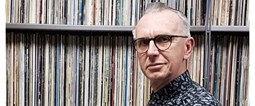
Foto © Leentje Arnouts
"WAGON JAZZ"
cycle d’interviews réalisées
par Georges Tonla Briquet

our partners:
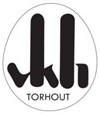


Hotel-Brasserie
Markt 2 - 8820 TORHOUT
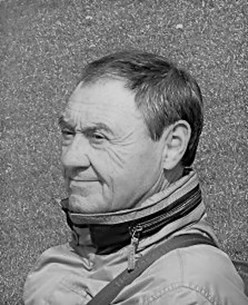
Silvère Mansis
(10.9.1944 - 22.4.2018)
foto © Dirck Brysse
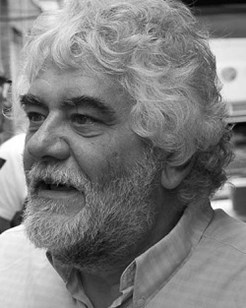
Rik Bevernage
(19.4.1954 - 6.3.2018)
foto © Stefe Jiroflée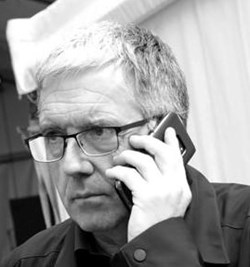
Philippe Schoonbrood
(24.5.1957-30.5.2020)
foto © Dominique Houcmant
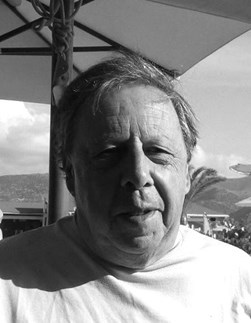
Claude Loxhay
(18/02/1947 – 02/11/2023)
foto © Marie Gilon
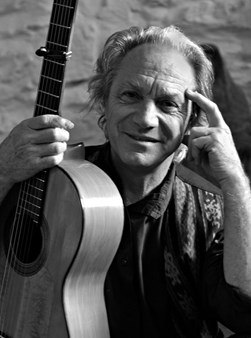
Pedro Soler
(08/06/1938 – 03/08/2024)
foto © Jacky Lepage
Special thanks to our photographers:
Petra Beckers
Ron Beenen
Annie Boedt
Klaas Boelen
Henning Bolte
Serge Braem
Cedric Craps
Luca A. d'Agostino
Christian Deblanc
Philippe De Cleen
Paul De Cloedt
Cindy De Kuyper
Koen Deleu
Ferdinand Dupuis-Panther
Anne Fishburn
Federico Garcia
Jeroen Goddemaer
Robert Hansenne
Serge Heimlich
Dominique Houcmant
Stefe Jiroflée
Herman Klaassen
Philippe Klein
Jos L. Knaepen
Tom Leentjes
Hugo Lefèvre
Jacky Lepage
Olivier Lestoquoit
Eric Malfait
Simas Martinonis
Nina Contini Melis
Anne Panther
France Paquay
Francesca Patella
Quentin Perot
Jean-Jacques Pussiau
Arnold Reyngoudt
Jean Schoubs
Willy Schuyten
Frank Tafuri
Jean-Pierre Tillaert
Tom Vanbesien
Jef Vandebroek
Geert Vandepoele
Guy Van de Poel
Cees van de Ven
Donata van de Ven
Harry van Kesteren
Geert Vanoverschelde
Roger Vantilt
Patrick Van Vlerken
Marie-Anne Ver Eecke
Karine Vergauwen
Frank Verlinden
Jan Vernieuwe
Anders Vranken
Didier Wagner
and to our writers:
Mischa Andriessen
Robin Arends
Marleen Arnouts
Werner Barth
José Bedeur
Henning Bolte
Erik Carrette
Danny De Bock
Denis Desassis
Pierre Dulieu
Ferdinand Dupuis-Panther
Federico Garcia
Paul Godderis
Stephen Godsall
Jean-Pierre Goffin
Claudy Jalet
Chris Joris
Bernard Lefèvre
Mathilde Löffler
Claude Loxhay
Ieva Pakalniškytė
Anne Panther
Etienne Payen
Quentin Perot
Jacques Prouvost
Renato Sclaunich
Yves « JB » Tassin
Herman te Loo
Eric Therer
Georges Tonla Briquet
Henri Vandenberghe
Peter Van De Vijvere
Iwein Van Malderen
Jan Van Stichel
Olivier Verhelst



